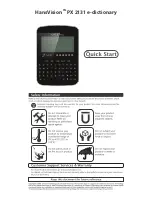
Section 12 — Sequencer and Audio Track Concepts
About Audio Tracks
23
When both Audio Tracks are selected (both yellow LEDs lit) and Source Monitor disabled (both red
LEDs off), pressing a solidly-selected Audio track button will cause both Audio Tracks to become
Source Monitor enabled (both red LEDs on). Successive presses of the solidly-selected Audio Track
will alternate between Source Monitor disable and Source Monitor enable for both tracks.
When both Audio Tracks
are selected and Source
Monitor is disabled:
A
B
Pressing a solidly-
selected Track button:
A
B
Will make both tracks
become Source Monitor
enabled:
A
B
Press
• When both Audio Tracks are selected (both yellow LEDs lit), they will both remain selected in
Edit and Command Modes. The solidly-selected Audio Track is considered selected for
parameter editing in Edit Mode, and as the target for track commands in Command Mode. In
Edit and Command Modes, both Audio Tracks will be deselected as a pair (both Audio Track
yellow LEDs off), when an Instrument•Sequence Track is selected.
Note:
Audio input being monitored on an audio track will be muted during certain digital processing
operations.
How Audio Track Recording Works
Think of an Audio Track as a giant sample which is triggered by the sequencer. The sample is
referred to as an AudioSample, and the sequencer event that plays the sample is referred to as an
Audio Trigger. The Audio Trigger event specifies which AudioSample will play. Each Audio
Track can have multiple Audio Trigger events on it, one after the other, that will each trigger a
different AudioSample. However, each Audio Track can only trigger one AudioSample at a time.
Differences between Audio Track recording and sampling
• When recording an Audio Track, the ASR-10 automatically creates a trigger event for the data.
With ordinary sampling you would have to:
①
create the sample as a WaveSample in an Instrument.
②
go into record on the sequencer, and
③
trigger the sample where you want it to play (by playing a key and holding the key down
for the full length of the sample).
• The Audio Track audition mechanism greatly simplifies the process of recording a part,
listening to it in context with a sequence, and re-recording the part if desired.
• When you locate to a section of a sequence that contains audio data, the ASR-10 will play back
all the data (sequence and audio) from that point onward, even if the Audio Trigger event
started earlier. With a sample, you would not hear any audio playback if you located past the
sequencer key event that triggered it.
• The length of a DiskTrack is limited only by the size of your SCSI storage device, so you can
create much longer audio recordings than when using sampling.
• You can punch in/out with an AudioSample; you cannot with a WaveSample.
















































